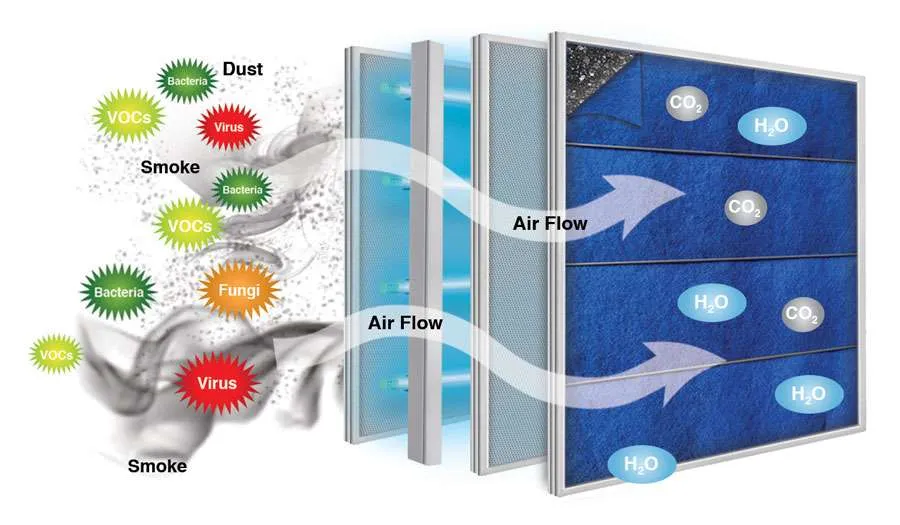휘발성 유기 화합물의 광촉매 산화 (VOC) 자외선 발광 다이오드를 사용하여 공기 중에서 (365nm UV-LED)

본 연구의 목적은 자외선 발광 다이오드의 응용을 실험적으로 조사하는 것이었다. (UV-LED) 휘발성 유기화합물 제거용 (VOC) 공중에서. For this purpose, a 365 nm UV-LED and a photocatalyst were used in a batch reactor to study the photocatalysis of toluene as the representative pollutant. It was demonstrated that combining reduced graphene oxide (rGO) with titanium dioxide (TiO2) and immobilizing the catalyst on the porous substrate could significantly improve the photocatalytic activity compared with the pristine TiO2 catalyst on a solid substrate. Photocatalyst deactivation was also studied by running cyclical tests. The photocatalytic crystal structure remained intact, but catalytic activity declined more than 80% after five consecutive photocatalytic tests for treating relatively high toluene concentrations. The adsorbed intermediates of toluene photocatalysis, such as benzoic acid, benzaldehyde, and benzyl alcohol, were identified, and the deactivation mechanism was proposed. It was shown that the deactivated photocatalyst can be effectively regenerated by UV-LED irradiation of 38.5 mW/cm2 irradiance within two hours. Overall, it was concluded that the UV-LED with a TiO2 on porous support provides an effective method for practical air purification applications.
 심천 잉펑 광전자(Shenzhen Yingfeng Opto-Electronic Co.), 주식회사.
심천 잉펑 광전자(Shenzhen Yingfeng Opto-Electronic Co.), 주식회사.
